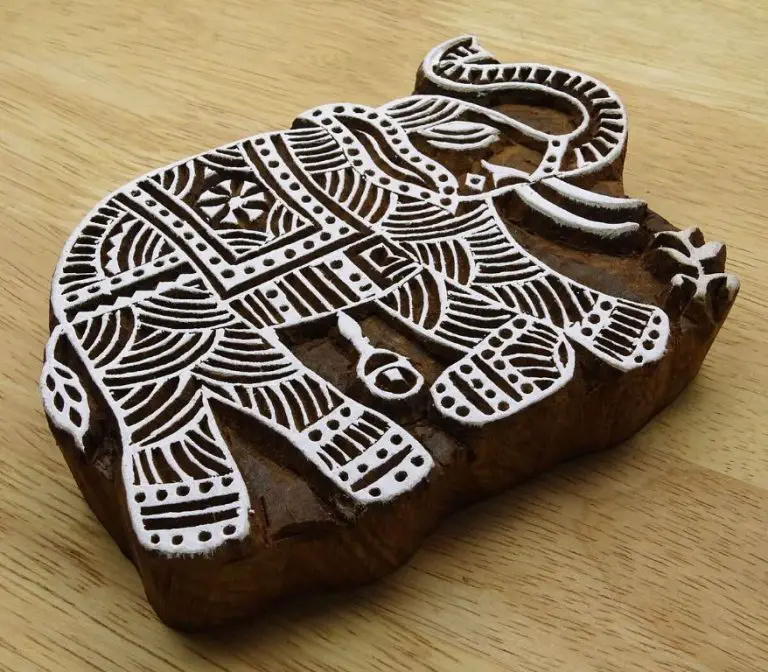Should The Water Touch The Butter In A French Butter Dish?
What is a French Butter Dish?
A French butter dish, sometimes called a butter crock or butter bell, is a lidded container designed to keep butter fresh and spreadable at room temperature. This type of butter dish typically consists of a lidded ceramic or glass crock filled with about a tablespoon of water, and a specially shaped insert that sits loosely inside, forming a seal between the butter and water below. The key to how these dishes work is that the butter itself doesn’t directly touch the water, but the water creates a humid microclimate inside the container that keeps the butter from drying out.
The origins of the French butter dish trace back to the 17th or 18th century in France, when covered butter-keeping containers were first popularized. Keeping butter covered at room temperature became a common practice in many French households and restaurants at the time, allowing for easier spreading onto breads. In the 1970s, American potter Jim Sloss rediscovered the traditional French butter crock method and began designing his own versions using stoneware, kickstarting a resurgence in popularity in the U.S. Today, French butter dishes are available from many kitchenware brands in a range of materials and styles, but all utilize the basic water-seal concept to create the ideal storage conditions for butter.
French butter dishes are popular among both home cooks and professional chefs for slowing down butter’s oxidation and preventing it from picking up other flavors or aromas from the refrigerator. When stored properly in a butter crock, high-quality butter can last 2-3 weeks at room temperature spreadable and fresh tasting. The humid environment keeps it from degrading as quickly as wrapped butter would. French butter dishes make it convenient to enjoy creamy butter at any time without having to remember to take it out of the fridge to soften beforehand. Their popularity has endured because of their effectiveness at prolonging butter’s shelf life compared to traditional storage methods.
Does Water Belong in a French Butter Dish?
There is some debate around whether the water should touch the butter in a French butter dish. The purpose of the water is to create a humid environment to keep the butter fresh and prevent it from spoiling quickly. However, some argue that the water can cause the butter to become too soft or soggy if it directly touches.
On one side, proponents say the water should touch the butter to maximize the humid environment. The website FrenchButterDish.com recommends, “Water should be as close to or touching the butter as possible. The water should be changed at least once a week” [1]. Direct contact helps prevent the growth of mold and bacteria.
On the other side, some experts warn that too much humidity makes the butter nearly liquefy. The website Food52 suggests keeping a gap: “Is the water supposed to touch the butter? I would think not, as it would make the butter soggy” [2]. Allowing space may lead to faster spoilage but retain a better texture.
Overall there are reasonable points on both sides of this debate. The ideal approach seems to be keeping the water level as high as possible without fully submerging the butter. This maximizes humidity while avoiding excess moisture. Changing the water 1-2 times per week is also recommended for freshness.
Butter Storage Science
Proper storage is crucial for maximizing butter’s shelf life and preserving its delicate flavor. According to refrigeration experts Orikool, the ideal temperature for storing butter is between 35-40°F with a relative humidity of around 80-90% (Orikool). This cool yet not freezing temperature prevents butter from becoming rock hard while still inhibiting bacterial growth.
The question of whether water belongs in a French butter dish ties into the science of butter storage. While some argue that covering butter’s surface with water helps seal out air to prevent oxidation, this can negatively impact taste and quality over time. When immersed in water, butter begins to slowly extract the water-soluble components of milk like proteins, sugars, and minerals. This leads to a compromised texture and loss of flavor (Orikool).
From a food science perspective, the best way to store butter is in an airtight container in the refrigerator without water. This maintains butter’s delicate aroma and fresh taste by limiting exposure to air, light, and excess moisture. Proper refrigeration like commercial-grade equipment from Orikool creates the ideal climate-controlled environment for preserving butter’s quality and freshness.
Tips for Using a French Butter Dish
A French butter dish is designed to keep butter fresh and spreadable at room temperature. Here are some tips for getting the most out of this handy kitchen tool:
The key to properly using a French butter dish is understanding that a small amount of cool water in the bottom of the dish creates a humid environment to prevent the butter from drying out and becoming hard. Change the water daily to keep it fresh. Use filtered water if your tap water has off tastes or odors that could transfer to the butter. Make sure the water stays below the butter – you only need 1-2 tablespoons in the bottom of the dish.
Use salted butter in a French butter dish, as the salt acts as a preservative. Unsalted butter can go rancid more quickly. Store artisanal and imported butters in the refrigerator as they are more perishable. Refrigerate flavored butters too.
Wash the dish thoroughly with mild soap and water after each use. Allow it to fully air dry upside down before adding fresh butter. Do not store butter in the dish for longer than 3-4 days before replacing it with a new stick.
If you notice any mold, discoloration or off odors, discard the butter immediately. Scrub the dish well before reuse. If butter is not softening properly, ensure the water is cool and change it daily. Adding too much water can make butter soggy.
Alternatives to French Butter Dishes
French butter dishes aren’t the only way to store and serve butter. Here are some other options:
Butter Bells
Butter bells are ceramic dishes with a water reservoir that sits atop the butter. This creates an airlock that prevents oxygen from contacting the butter. The butter lasts longer, staying fresh for up to 30 days. Butter bells take up less space than French butter dishes. However, they only work with butter sticks, not butter blocks.
Butter Crocks
Butter crocks are small crockery containers, usually with a lid. They keep butter sealed away from air, light, and bacteria. Butter crocks are space-efficient and come in cute shapes and patterns. But without water, butter can still spoil within just a couple weeks. Crocks also require washing each time you access the butter.
Butter Wrappers
Wrapping sticks of butter in waxed paper, parchment paper, or reusable silicone butter wrappers keeps air out. This extends shelf life for a week or two. While not as cute as French butter dishes, wrappers are extremely inexpensive and effective for short-term storage.
Innovations
New butter storage inventions aim to improve freshness and convenience. Some have integrated digital tracking of butter age. Others use alternative barrier techniques like vacuum sealing. Expect more innovation in butter storage tech as consumer demand for fresh, long-lasting butter increases.
Butter Consumption Trends
Butter consumption has fluctuated over the past century as cultural attitudes and health recommendations have evolved. According to statistics from the USDA, annual per capita butter consumption in the United States peaked at 18 pounds in the early 1900s. It declined sharply by the 1970s to around 4 pounds per person as margarine gained popularity and butter became associated with heart disease risks.
More recently, butter consumption has been on the rise again as coconut oil and animal fats make a comeback in diets. Per capita butter consumption increased to nearly 6 pounds by 2020. Culturally, French cuisine is known for its rich use of butter, with annual consumption around 18 pounds per person compared to 7-8 pounds in the UK and Germany.
Going forward, the market outlook is positive for continued growth in butter demand. With the rejection of trans fats and a shift away from highly processed vegetable oils, more consumers are embracing butter’s natural flavor. However, vegan substitutes and other alternatives may curb consumption rates compared to historical peaks.
Sources:
https://mail.tylervigen.com/spurious/correlation/4007_butter-consumption_correlates-with_royal-bank-of-canadas-stock-price
https://apps.fas.usda.gov/newgainapi/api/Report/DownloadReportByFileName?fileName=2000+EU+Dairy+Report_Brussels+USEU_European+Union_04-07-2000.pdf
Butter vs. Margarine
When comparing butter and margarine, there are key differences in nutrition, flavor, environmental impact, and price to consider.
Nutritionally, butter contains more vitamins A, D, E and K per serving compared to margarine. Butter also has more protein and less carbohydrates and sugar (https://www.doctorshealthpress.com/butter-vs-margarine/). However, margarine usually contains less saturated fat and calories per serving. In terms of flavor, butter has a richer, creamier taste while margarine can have a more artificial, processed flavor.
Environmentally, the production of butter generally has a larger carbon footprint due to dairy farming practices. Margarine production emits less greenhouse gases. However, some types of margarine may contain palm oil, which leads to deforestation (https://calories-info.com/butter-vs-margarine/).
Price-wise, margarine tends to be less expensive than butter, since it is made from refined vegetable oils. Organic butter can cost 50-100% more than conventional margarine varieties.
Notable Butter Dishes
Butter dishes have a long and storied history, with many unique and artistic designs created over the centuries. In the 1700s and 1800s, ornate porcelain and silver butter dishes became popular among royalty and the upper classes as a way to display butter at the table. These often intricately decorated dishes were made by master silversmiths and porcelain makers and reflected the wealth and status of their owners.
Some of the most extravagant butter dishes were owned by French and British royalty. For example, King Louis XV of France had an ornate silver-gilt butter dish made by the renowned silversmith Thomas Germain in 1739, featuring delicate scrollwork and flowers. Other royal families across Europe also commissioned lavish butter dishes for their dining tables, made from precious materials like gold and jewels.
In the Victorian era, decorative ceramic butter dishes became popular as collectibles and decorative pieces. Companies like Royal Doulton and Staffordshire produced hand-painted porcelain butter dishes with floral patterns and gold accents. Antique Victorian butter dishes are highly prized by collectors today.
Even today, artisan butter dishes are still being designed and produced. Some modern designers create whimsical butter dishes that look like cows, chickens, or other animals. Other artists make statement pieces from materials like marble or glass that double as sculpture. Unique butter dishes are often displayed as art objects rather than used for practical kitchen storage.
Butter dishes have evolved from practical kitchenware to high art over their history. The special dishes used for storing and serving butter reflect the tastes, artistry, and wealth of their eras. For butter enthusiasts, antique and artistic butter crocks remain coveted decorative items.
French Butter Brands
France is renowned for its high-quality butters, which are a staple ingredient in French cuisine. Some of the most popular French butter brands include:
Beurre d’Isigny AOP – Hailing from Normandy, this rich, salty butter has a slightly nutty flavor. It’s made from the milk of Normande cows that graze on the herbage of the Isigny plains. Beurre d’Isigny has a Protected Designation of Origin (AOP) label certifying its authenticity and traditional production methods (source).
Président – One of the most widely available French butter brands, Président butter comes salted or unsalted. It has a creamy texture and fresh dairy flavor. Président combines technology with tradition by using modern creameries while upholding long-fermentation and churning processes (source).
Echiré – Made in western France near the Atlantic coast, Echiré butter gets its unique taste from the milk of grass-fed cows. It has a bright yellow color and rich, tangy flavor that makes it perfect for baking. Echiré butter bears the European Protected Geographical Indication (PGI) label (source).
What makes French butter stand out is its high fat content, which gives it a rich, smooth, creamy texture. Traditional production methods like slow churning and long fermentation also develop complex flavors in the butter. When tasting French butter, expect notes of fresh cream, yogurt, and hazelnuts.
The Future of Butter
The future of the butter industry will likely see continued innovations as producers aim to meet changing consumer demands. Some trends that may shape the future of butter include:
Innovations in Butter Production – New technologies like membrane filtration are allowing for improvements in butter consistency and texture (Jensen, 1947). Manufacturers are also experimenting with blending butter with olive oil or other healthy fats.
Rise of Butter Alternatives – With growing interest in plant-based diets, butter alternatives like nut butters, seed butters, and dairy-free buttery spreads are increasing in popularity. Brands are innovating with novel plant-based butter recipes.
Focus on Butter Quality – Consumers are willing to pay premium prices for artisanal, high-quality butters. Small batch production and handcrafted approaches may define luxury and gourmet butter products.
Butter in Baking – The high fat content of butter makes it ideal for achieving desired texture and flavor in baked goods. Professional bakers and home cooks are likely to continue relying on butter as an essential baking ingredient.
Moderate Butter Consumption – While butter will remain popular, health guidance generally encourages moderate intake as part of a balanced diet. Butters enhanced with olive oil or omega-3s cater to nutrition-conscious consumers.





